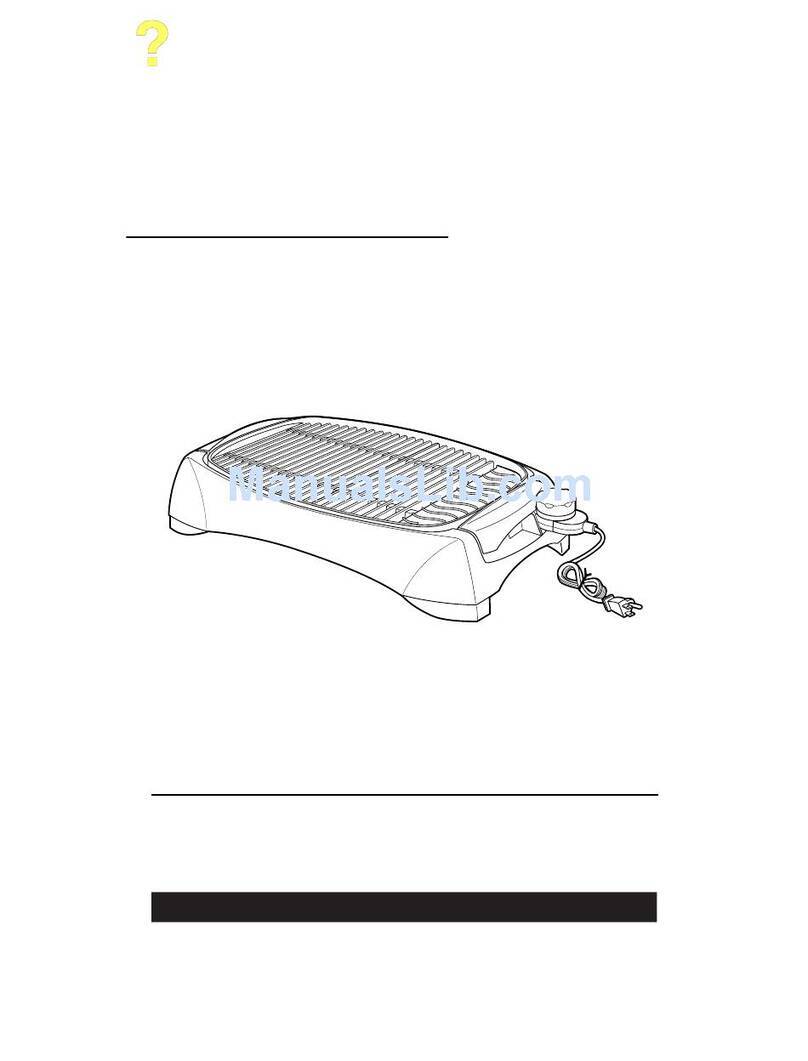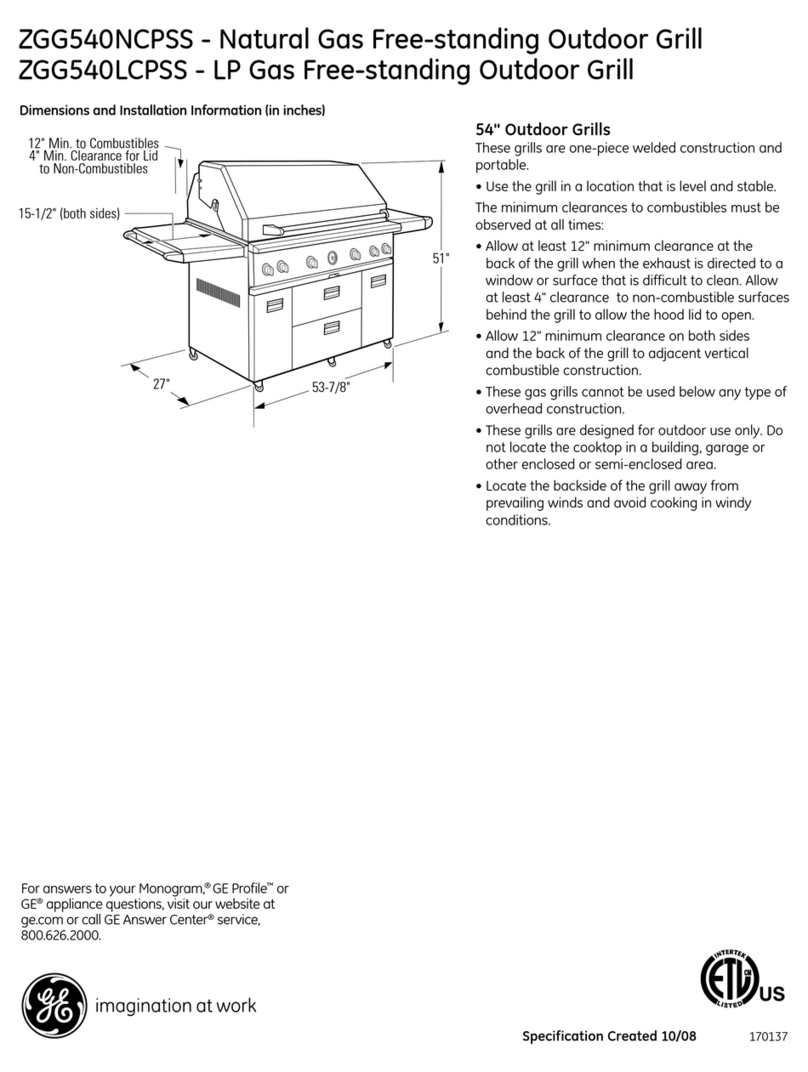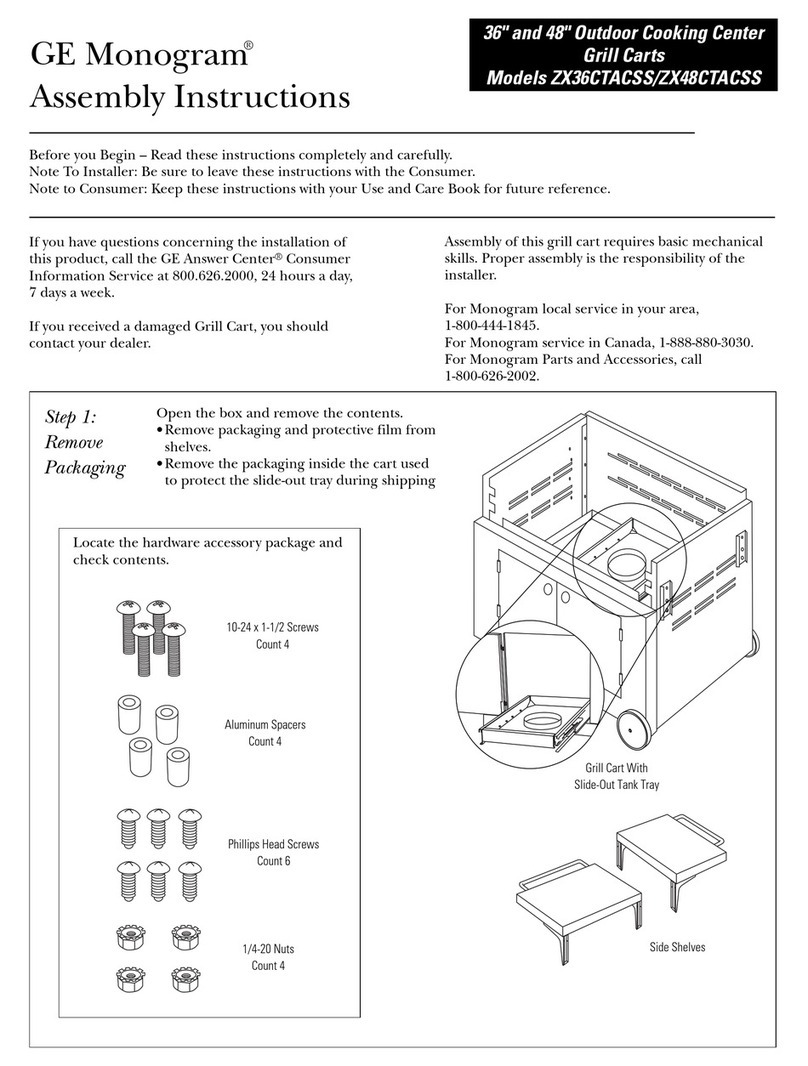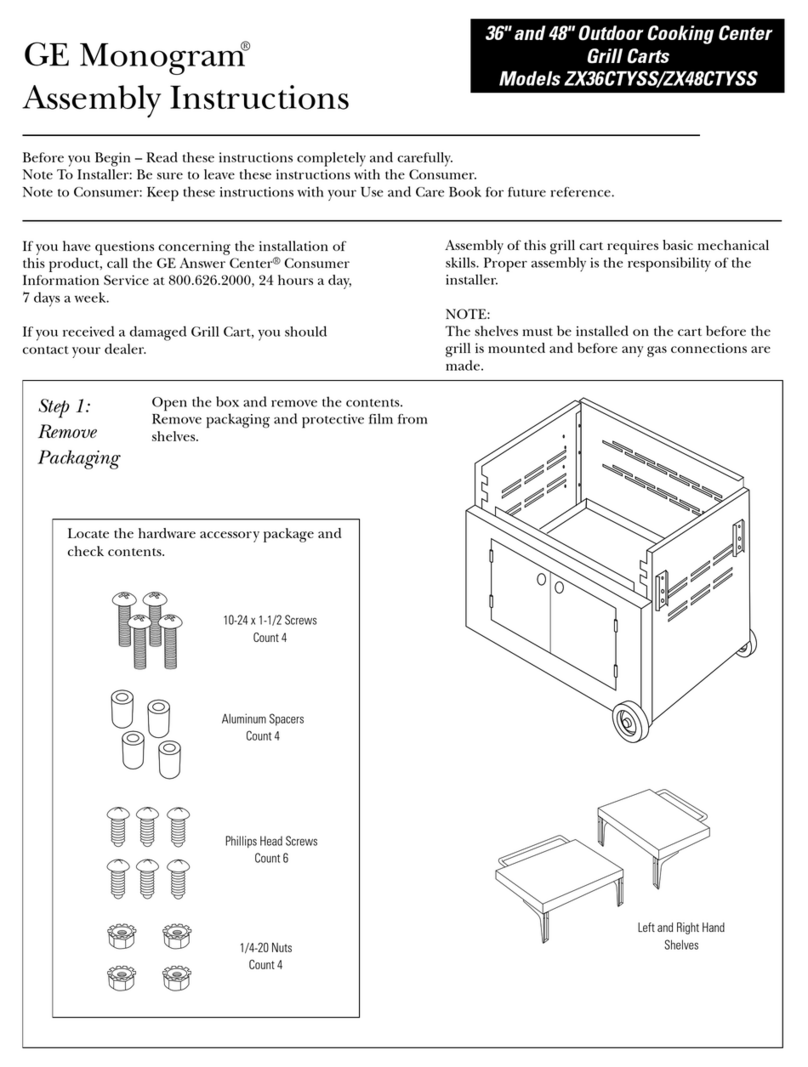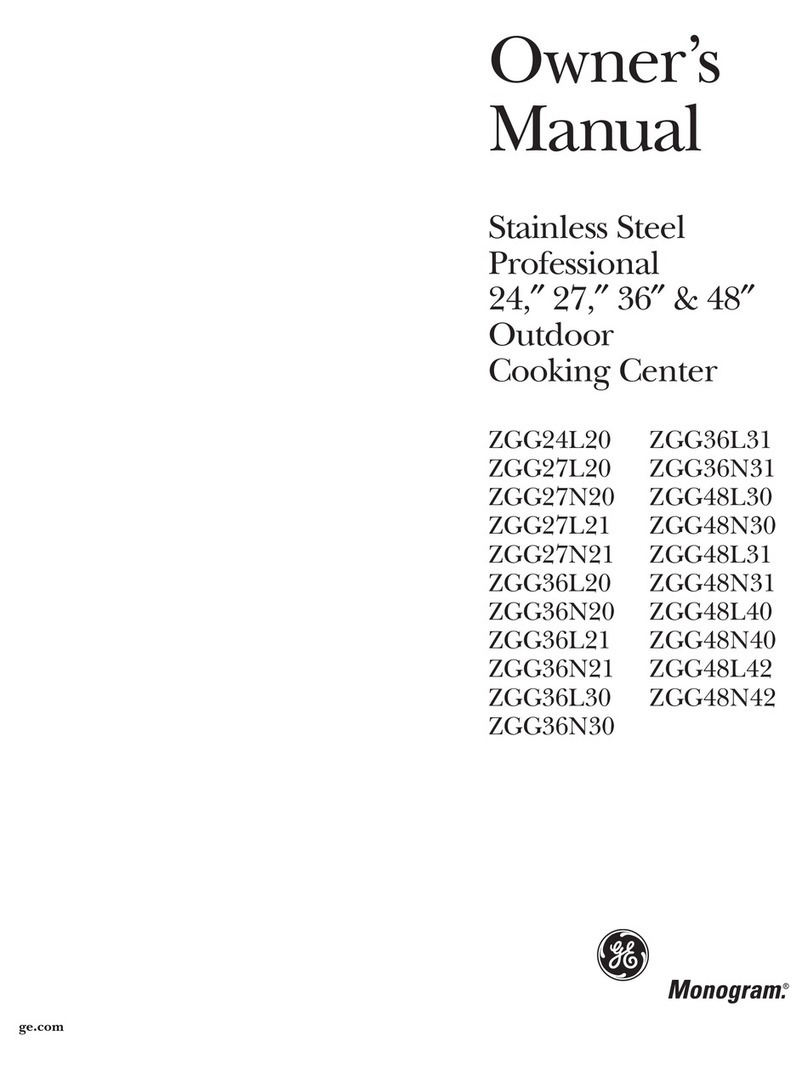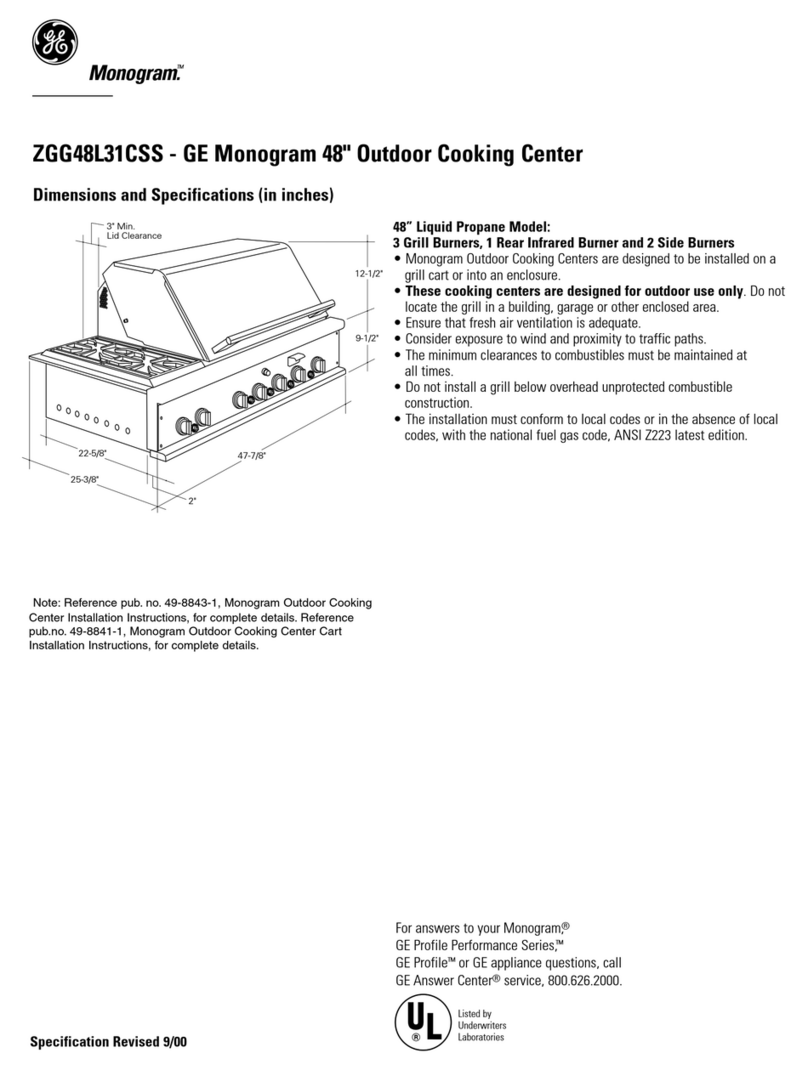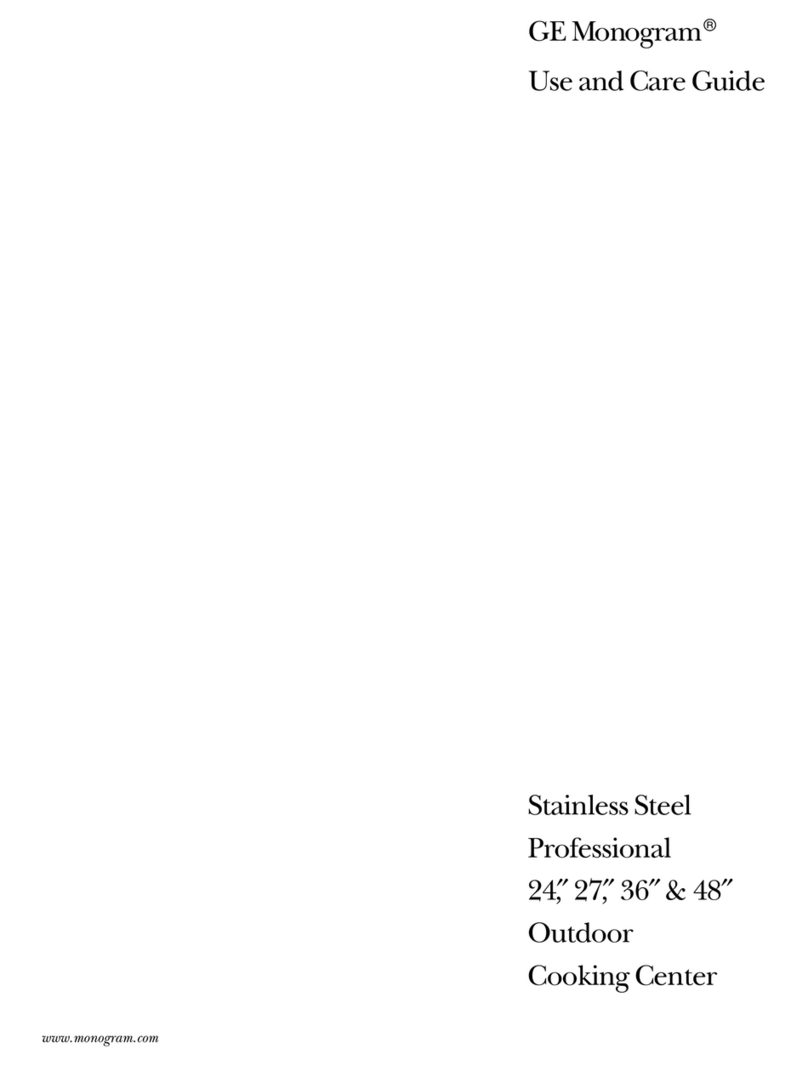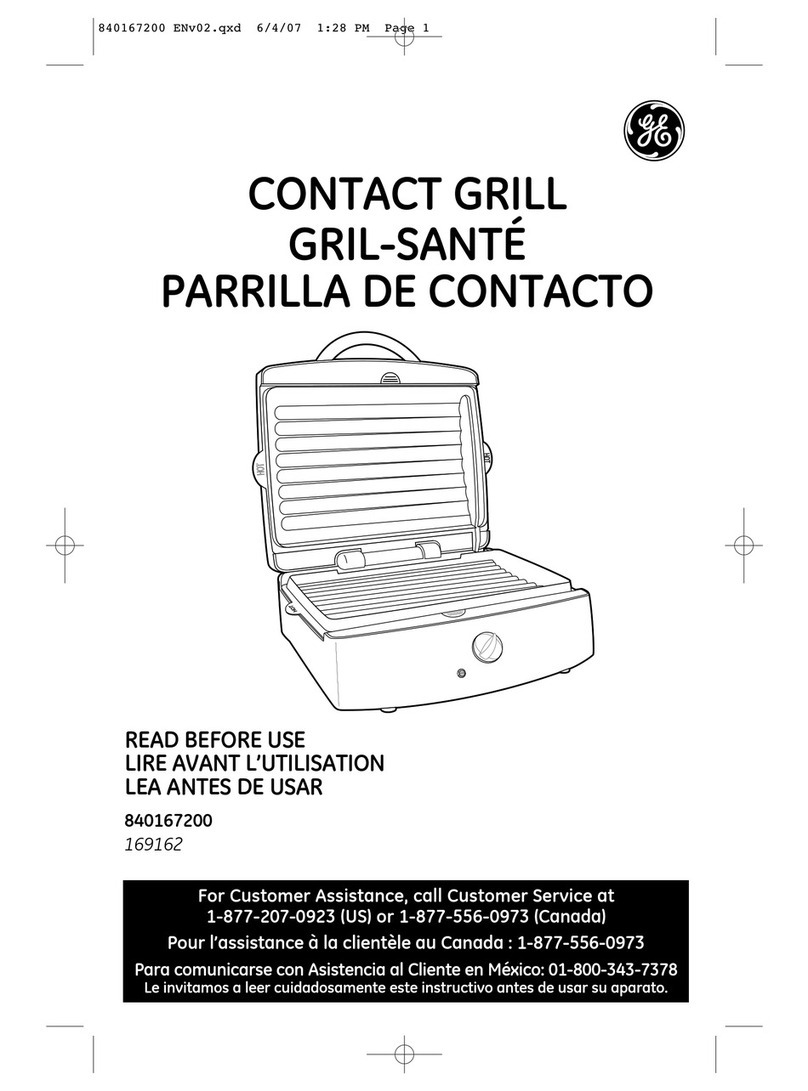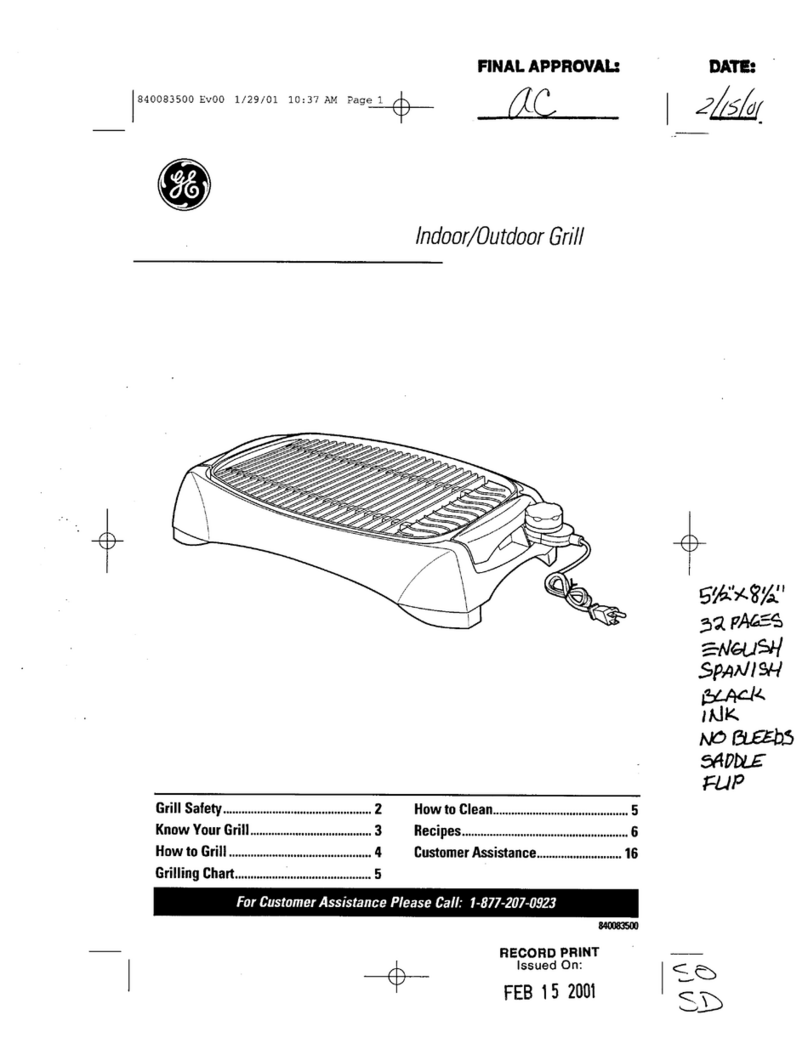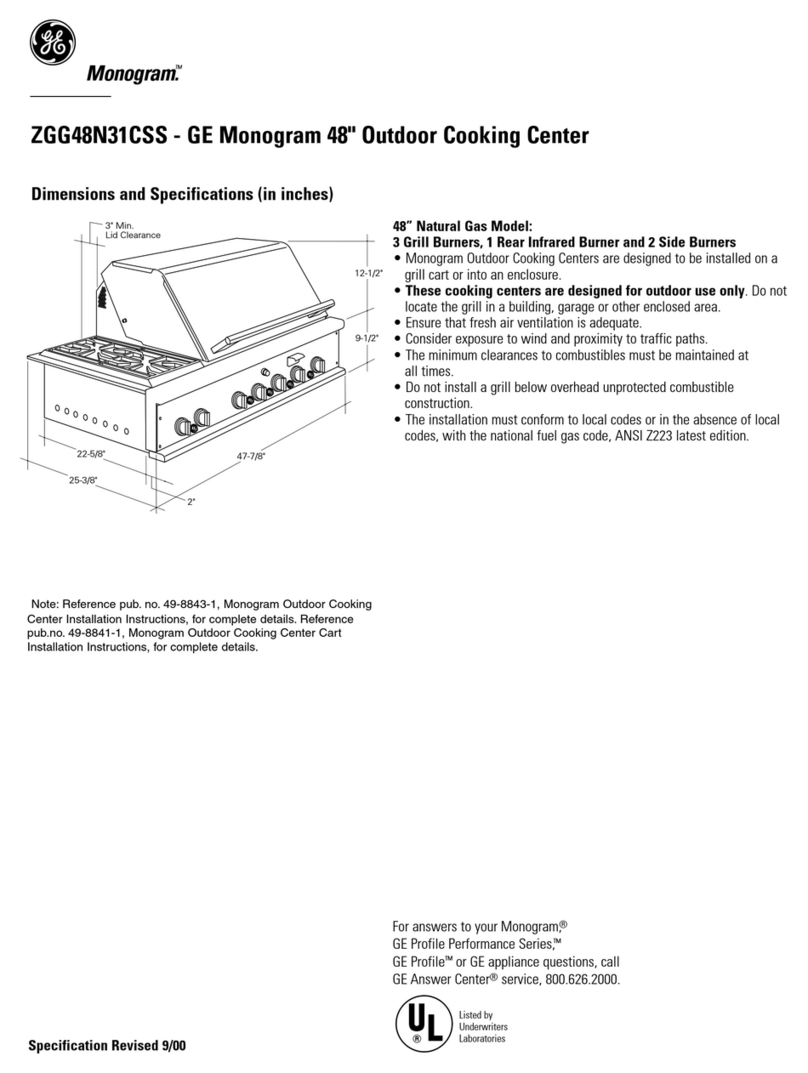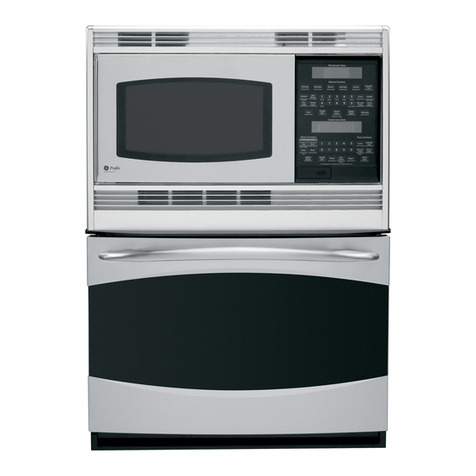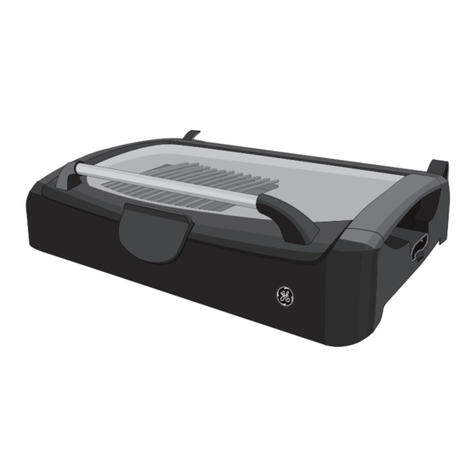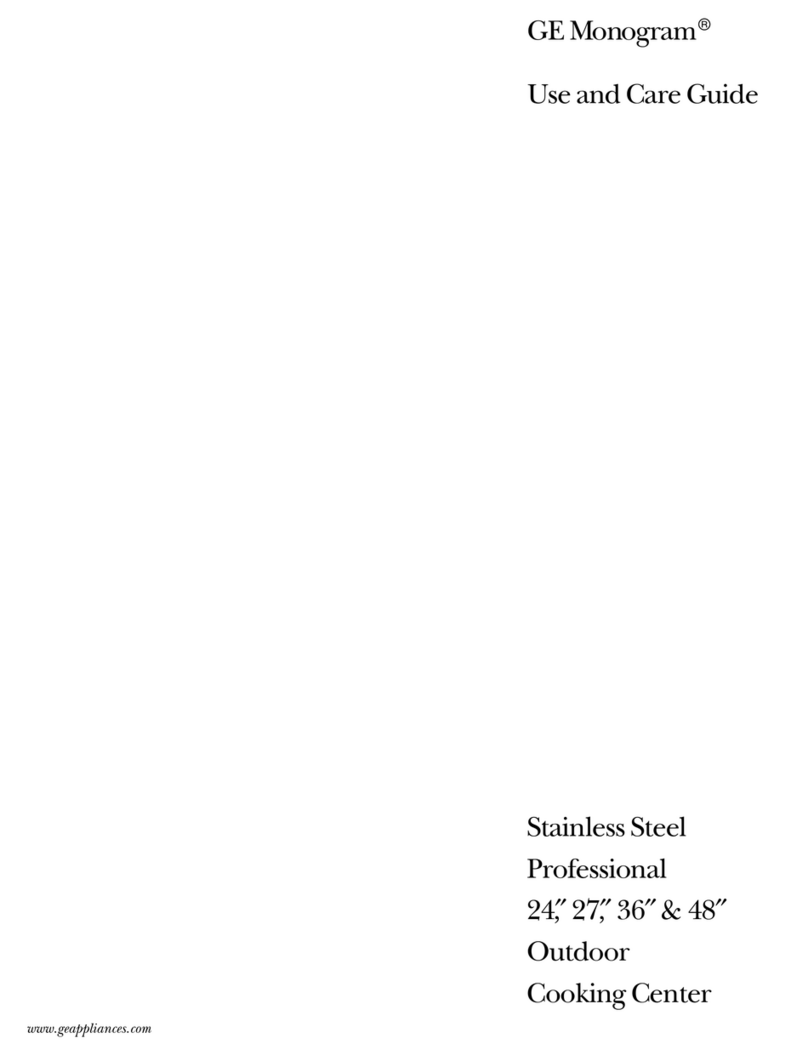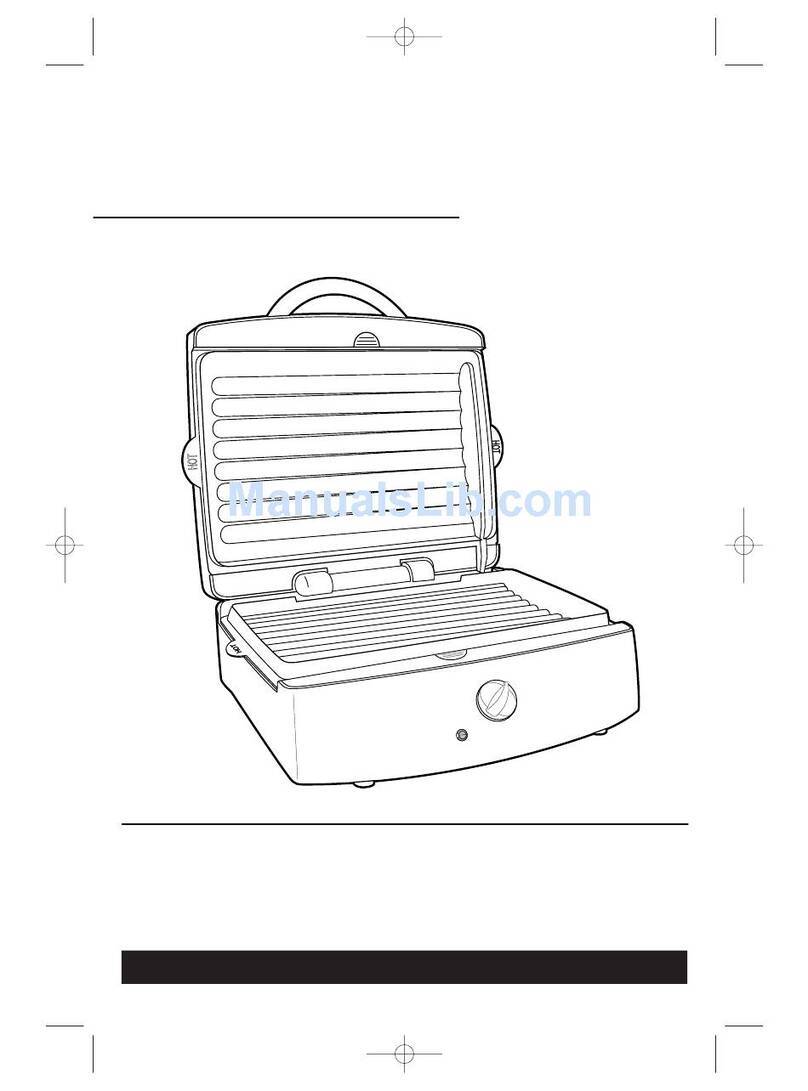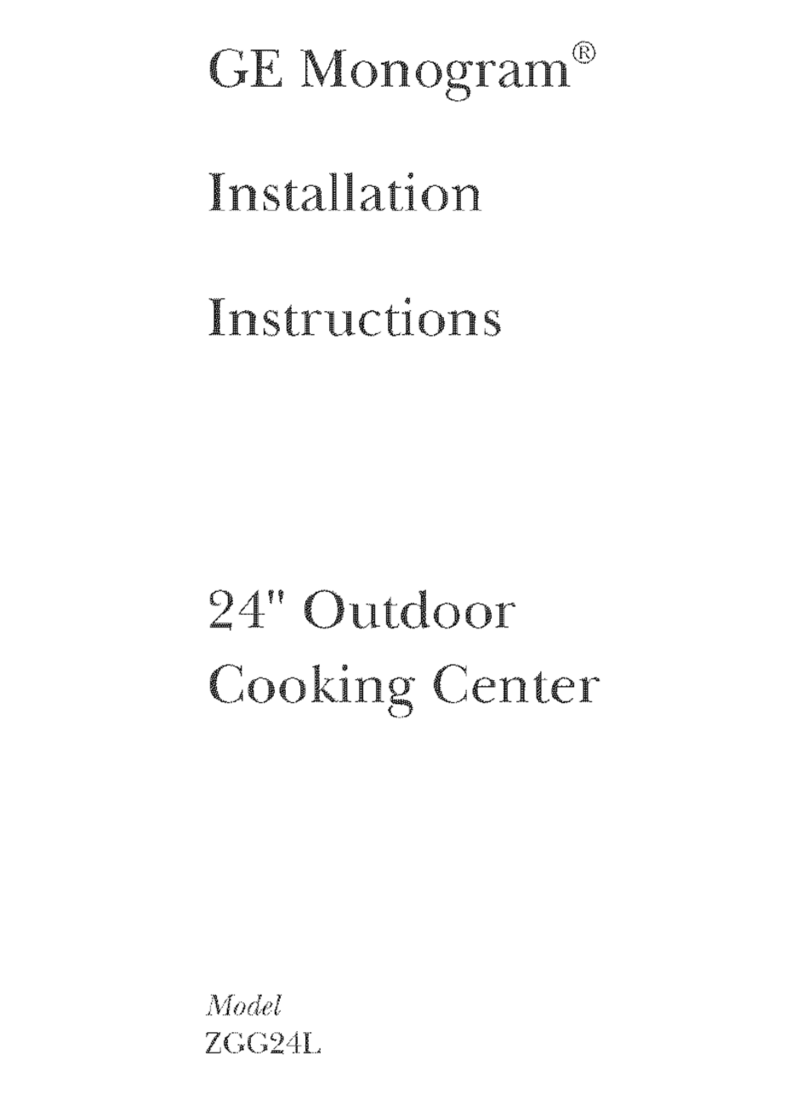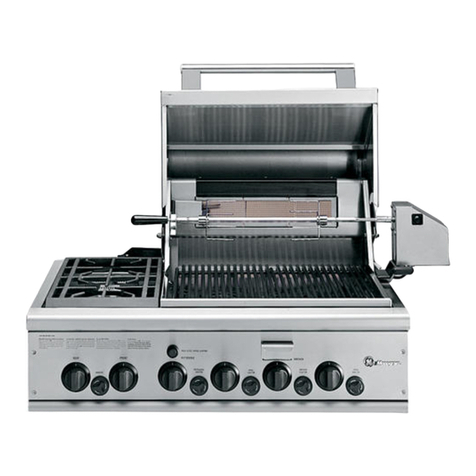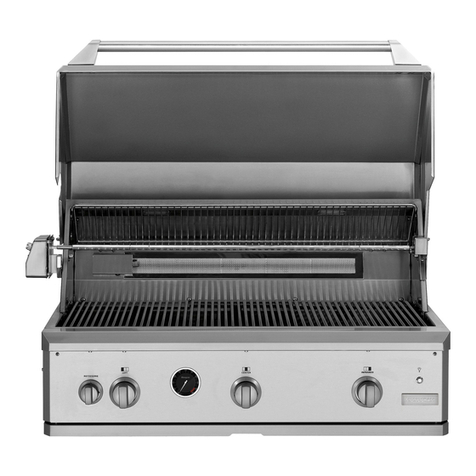3
Important Safety Instructions
IMPORTANT SAFETY INSTRUCTIONS
Read all instructions before using this appliance.
When using electrical appliances, basic safety
precautions should be followed, including the
following:
• Use this grill only for its intended use
as described in this use and care guide.
• Be sure your appliance is properly installed
and grounded by a qualified technician in
accordance with the provided installation
instructions.
• Do not assume that you know how to operate
all parts of the grill. Some features may work
differently from those on your previous cooktop.
• Do not attempt to repair or replace any
part of your grill unless it is specifically
recommended in this guide. All other servicing
should be referred to a qualified technician.
• Have the installer show you the location
of the circuit breaker or fuse. Mark it for easy
reference.
• Before performing any service, disconnect
the grill power supply at the household
distribution panel by removing the fuse
or switching off the circuit breaker.
• Do not leave children alone or unattended
while the grill units are in operation.
They could be seriously burned.
• Do not allow anyone to climb, stand or hang
on the grill.
•
CAUTION: Items of interest to children should
not be stored in cabinets above the grill—children
climbing on the grill to reach them could be
seriously injured.
• Never wear loose-fitting or hanging garments
while using the grill.
Be careful when reaching for
items stored over the grill. Flammable material could
be ignited if brought in contact with hot surfaces and
may cause severe burns.
• Use only dry pot holders—moist or damp pot
holders on hot surfaces may result in burns from
steam. Do not let pot holders touch hot surface
units. Do not use a towel or other bulky cloths in
place of a pot holder.
• For your safety, never use your appliance for
warming or heating the room.
• Keep the vent grille, vent chamber and the
grease filters clean to maintain good venting
and to avoid grease fires.
• Do not let cooking grease or other flammable
materials accumulate on or near the grill.
• Do not store flammable materials near the
grill. Do not store or use combustible materials,
gasoline or other flammable vapors and liquids in
the vicinity of this or any other appliance.
• Do not heat unopened food containers.
Pressure could buildup and the container could
burst causing an injury.
• Do not touch the grill surfaces or areas near
the grilling surface. These surfaces may be hot
enough to burn even though they are dark in
color. During and after use, do not touch, or let
clothing or other flammable materials contact
grill surface or areas nearby grill surface; allow
sufficient time for cooling first.
Potentially hot surfaces include the grill and areas
facing the grill.
• When cooking pork, follow the directions
exactly and always cook the meat to an internal
temperature of at least 170°F. This assures that,
in the remote possibility that trichina may be
present in the meat, it will be killed and the meat
will be safe to eat.
• Do not use aluminum foil to line the grill basin
or grill. Misuse could result in a shock, fire
hazard or damage to the grill.
• Only the grill grate may be placed over the grill
heating element.
• Keep the grill basin, the grill-rocks, the grill
grate and the grease collector jar clean. Be
sure the drain hole in the grill basin is open. If
clogged, a fire can occur. Empty the grease jars
frequently.
•
Never clean the grill surface when it is hot. Some
cleaners produce noxious fumes and wet cloths
could cause steam burns if used on a hot surface.
• Do not use cookware on the grill section of
this cooktop.
(continued next page)












